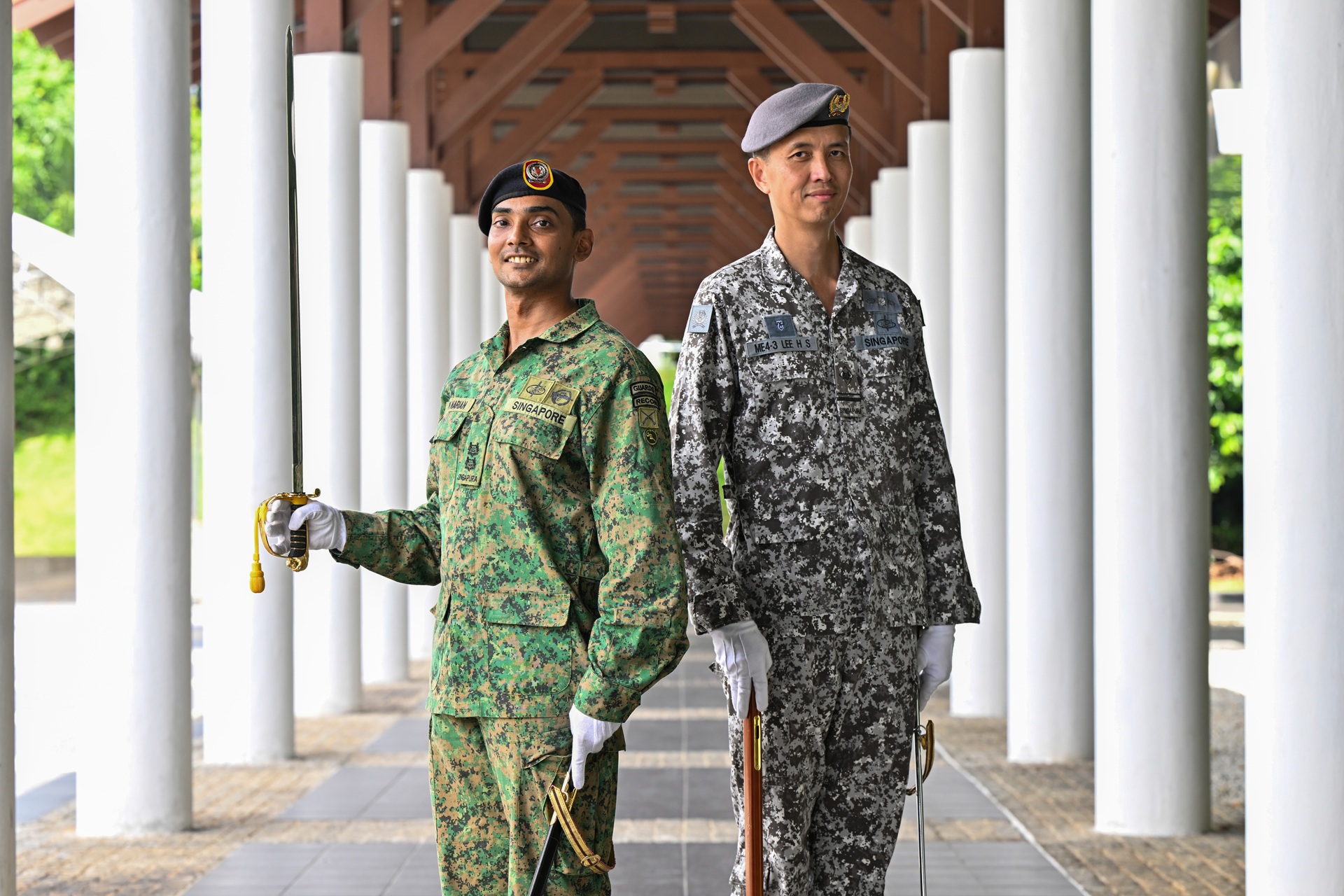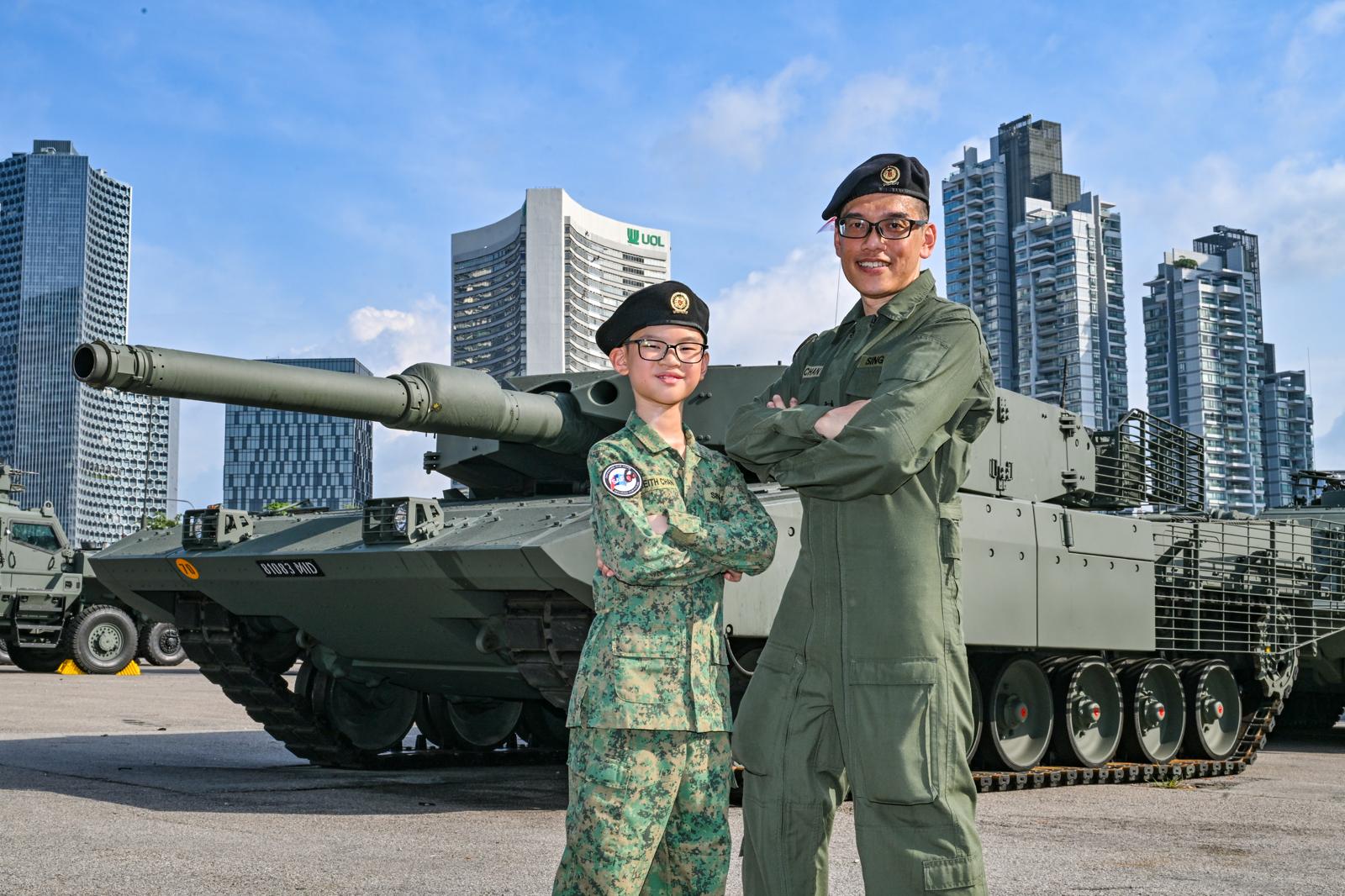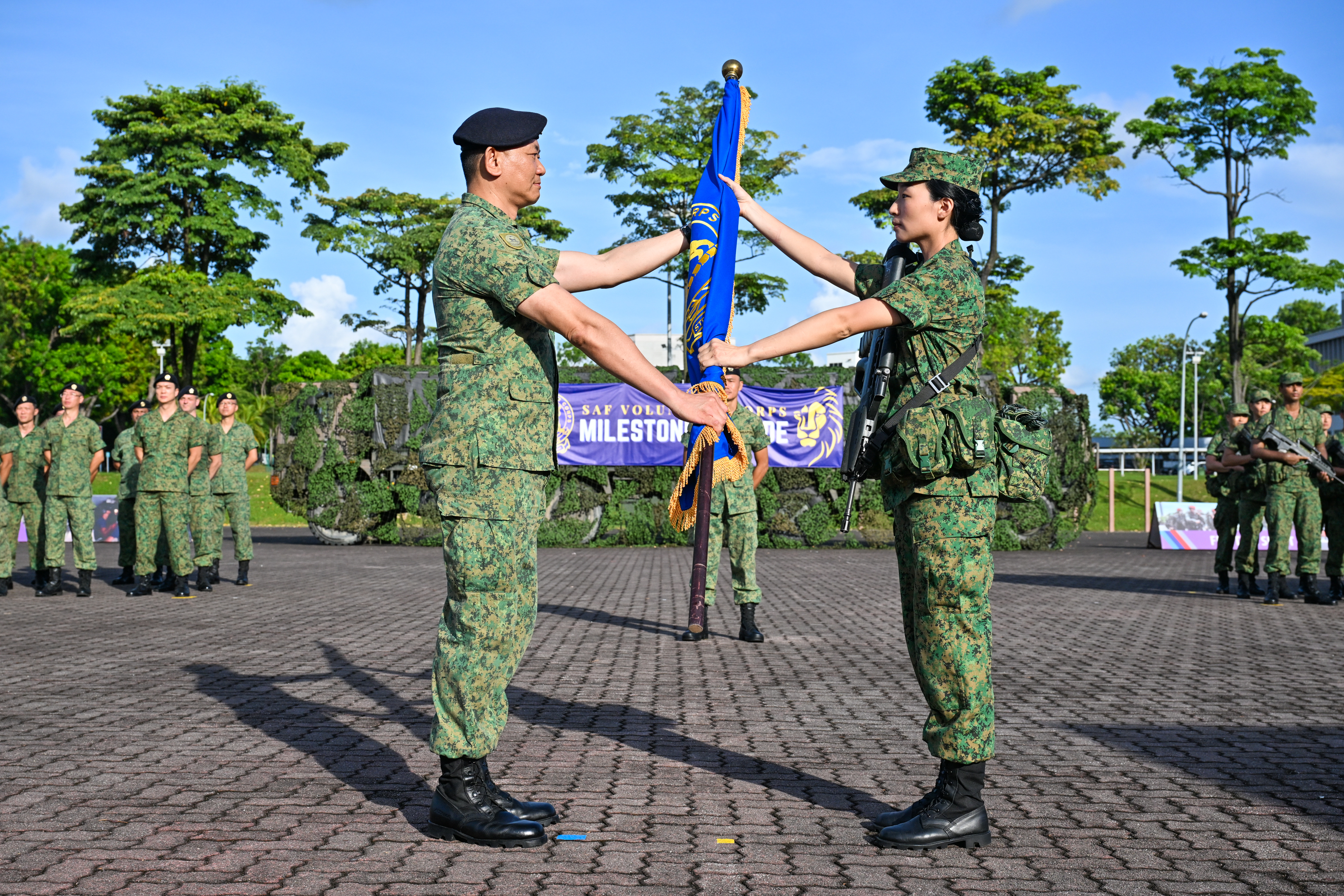A STRONG ARMED FORCE, A STRONG NATION
STORY // Benita Teo & Matthew Neo
PHOTO // PIONEER Photographers & Courtesy of Syed Ibrahim, Nancy Tan & Lam Chun See
Fifty years of nation building, fifty years of national defence. As the country celebrates five decades of independence, the Singapore Armed Forces (SAF) celebrates its golden jubilee too. We look at how the men and women of the SAF have helped to build a formidable armed force over the years.
It is no coincidence that the history of the SAF is closely intertwined with that of Singapore's independence.
Back in 1965, the SAF was established to protect the young and vulnerable nation-state as she embarked on her journey as a sovereign state. As Sun Tzu wrote in The Art of War, "The art of war is of vital importance to the State. It is a matter of life and death, a road either to safety or to ruin."
Indeed, the SAF was a cornerstone of Singapore's development, with our soldiers standing by the country through many turbulent and uncertain times.
From a fledgling corps of volunteers, the SAF is now one that can hold its own among international forces. It has earned its credibility through sheer hard work and displayed the unbreakable inner strength that has ensured the country's survival.
As we look back on half a century of national defence, listen to the stories of the men and women who played a part in building the SAF that provided Singapore with peace and stability. And hear in their voices the same strength that has created our strong nation.
Growing stronger in urgent times
Lieutenant Colonel (LTC) (Ret) Syed Ibrahim, 72
- SAF Pioneer, trained first batch of OCTs in SAFTI
- Formerly Commander, 2nd People's Defence Force Training Centre, and Brigade Commander, 27th Singapore Infantry Brigade
Dawn of a new era
At the time, the British were preparing to pull out from the Far East and we were moving towards a merger to form Malaysia. Eleven of us were picked by a panel of British generals after a stringent selection process, up from just four the year before.
About a year after the merger was finalised, I was selected for further training in Portsea, a town near Melbourne, Australia. There I gained much exposure to conventional warfare training, which proved to be useful in my subsequent military operations. The British and the Malayan Army, on the other hand, had been into counter-insurgency operations as they had been fighting communists in the Malayan jungles.
Real-life ops - Konfrontasi
I was commissioned as an officer and returned to Singapore in 1964, at the height of Konfrontasi. I was enjoying my disembarkation leave when a Land Rover came to my house and I was told to report to Temasek Camp, home of 2 SIR (2nd Battalion, Singapore Infantry Regiment). The battalion was deployed for Konfrontasi operations in southern Johor, and the next morning, I was driven to the operation area and introduced to my platoon - in the Kota Tinggi jungle.
Our role was to watch for infiltration by patrolling the border or from observation posts atop trees. It could be frustrating because you might be deployed for long periods and not find anything at all. It was tough, but we got through it.
When the Officer Cadet School (OCS) was established in 1966, I became section instructor to the inaugural batch of Officer Cadet (OCT) Trainees in SAFTI. This group had been instilled with a new sense of urgency: the SMF had been very vulnerable with only two infantry battalions. Hence, there was a great urgency for us to build our armed forces as quickly as possible. And when you're vulnerable, you have to train really hard, really fast.
Although many of the trainees were fresh out of school and alien to military discipline, they were determined to become professional military officers and were able to take the tough training in their stride.
The SAF forms the core of our national survival - you have to take your NS (National Service) training seriously and there cannot be a let-up in operational readiness. I'm glad I was able to play a constructive role in laying a strong foundation for the SAF."
A female soldier's strength
Captain (CPT) (Ret) Nancy Tan, 72
- SAF Pioneer, first batch of women officers
- Formerly Manpower officer, 2nd Brigade Training School
"I was working in the Singapore Police Force at the time. The SAF was quite new then and they needed experienced personnel to help with its set-up. So I was seconded to the SAF on 1 Jan 1967.
Why take up the offer? Well, it was a challenge! I'm the adventurous type, you know. That's why I became a policewoman.
A step for womankind
Three of us were selected to be the first female officers: me, CPT (Ret) Patricia Koh and Major (Ret) Agnes Fong. Training was conducted at Maju Camp, where we learnt matters like military law and general knowledge of the army. Then on weekends, we focused on fieldwork such as shooting and individual field craft.
Compared to our time, Basic Military Training (BMT) now is very well organised. There were only three of us then!
In late 1973, I was tasked to set up the first BMT for women. Together with other training officers, I came up with the curriculum. It was a modified one, less tough than that for the men, and lasted three months. I oversaw the training and discipline, and lectured on military law. Later, I also helped to start the full-time Officer Cadet Course for women.
Paving the way
I didn't expect to be promoted to Captain. In 1974, I became the first woman to receive the rank. My father was so proud.
Once, I remembered overhearing a group of men at the back of a pick-up exclaiming, "Aiyoh, ji kor zha bor sar liap ah (Oh my, this lady has three pips)?" They had never seen a female Captain before (chuckles)! I felt very proud to be able to show them that a woman could become a Captain too.
My most memorable experience was dealing with parents at the Infantry Training Depot (now BMT Centre). They tended to be very worried about their children's well-being.
Once, a recruit - an only son - was injured during training. His mother, a single mother, called me up. I listened to her and told her not to worry. I then spoke to her son and told him to see a doctor for his sprained ankle.
When I found that he was posted to my Headquarters, I helped to keep an eye on him. His mother was so grateful. These are the things that bring me satisfaction."
Building up a new strength
Mr Lam Chun See, 63
- First-generation National Serviceman, enlisted in January 1971
- Former Lieutenant, Platoon Commander, 30th Battalion, Singapore Combat Engineers
"On enlistment day, we all went to the Central Manpower Base (CMPB) at Dempsey Road. My mother wasn't upset as I was the second to enlist after my brother, but some of my kampung neighbors' mothers cried after dropping them off, just like in the movies!
A new and raw experience
When the 3-tonner pulled into our camp, the SAFTI I saw gave me a feeling of newness and rawness. There were a lot of big fields, and people were running in them - just like in the movies too. I was in Romeo Company, one of four situated around the parade square. Prime Minister Lee Hsien Loong was also in one of the companies that started training that day! Recently, I visited the place, and the parade square and our four blocks are all still there.
We would book out on Saturday afternoons and return on Sunday evenings. But we tended to book in very early because there was so much to do to prepare for the week. For example, if there was a parade the next day, we would have to polish our boots and bayonet buckles. The more kiasu you were, the earlier you booked in.
Every month, there was a pay parade. We had to put our hands out in front of us, palms facing up one hand on top of the other, and the officers would give us our $90. We were supposed to count the sum and say, "Pay correct, Sir" before we saluted and marched out. To make sure we counted carefully, the officers would sometimes play tricks on us by taking out $10 before handing it to us. Of course, they would never keep our money and would return it to us afterwards.
I completed my BMT and Section Leader's Course after six months. Subsequently, I went to OCS. During our time, we did not have much choice in whether we became officers or not. We were selected based on educational levels, interviews and aptitude tests. Nonetheless, when I was finally commissioned, I felt very proud because I had worked hard for it.
When my son enlisted in 2009, my advice to him was to take care of the weaker ones. I believe he took my advice, because I heard that he helped a platoon mate who was less fit dig a trench after he completed his own."
Strong soldiers, stronger bonds
2nd Lieutenant (2LT) Guo Jing Yang, 22
- Full-time National Serviceman
- Platoon Commander, Underwater Demolitions Group, Naval Diving Unit (NDU)
"Both my dad and elder brother have served NS, and my brother is a Captain in the Air Force. When I enlisted, both of them gave me the same advice: to be myself and make the most of my NS experience. This is advice that I've taken to heart.
When I was first in NDU, I did not want to be an officer. But since my dad told me to do my best, I just did what I could and should.
I was eventually selected to convert from a 3rd Sergeant (3SG) to an OCT, but I was still considering my decision.
Then I met three of my NDU batch boys, two Lieutenants and a Captain. During our Combat Diver Course (CDC), they actually took out their ranks and joined us in training. They were good officers and really inspired me to go ahead with OCS.
Growing together
Support from my batch mates was very important because we were all going through the same thing.
For instance, during CDC, some of my batch boys had difficulty swimming. I'm a good swimmer, so on weekends we would book the Republic Polytechnic pool and improve our skills. At the same time, I would ask them for advice on running, which is my weak suit.
Likewise, at the Midshipman Wing in OCS, when I was demoralised after failing two knowledge tests, I sought help from my batch mates who knew how to study smart and pick out key points. We went through revisions and practices together, even late into the night.
Everyone plays a part
Boat PT (physical training) is a very meaningful activity. Eight men have to share the load of a boat on their heads and if one man's head doesn't touch the boat, then the other seven have to bear a greater load. It was very painful and pushed us to our limits.
But the key lesson is that a man cannot survive without his team. If everybody plays their part, the load will be spread out evenly and we can pull through it together."
Going from strength to strength
Military Expert (ME) 5 Richard Goh, 51
- Officer Commanding, Development & Engagement Section, Navigation & Sailor Skills School
"My first ship in 1980 was a wooden ship, RSS Jupiter, which we bought from the United States. The Navy then focused on patrolling for illegal immigrants, and there was little talk about warfighting.
But in the late '80s to '90s, the Navy started to develop and we ventured into another dimension of warfare - underwater. We began building our anti-submarine capabilities and purchased the Missile Corvette. It was at this time that I was converted to be a Command and Control Systems Specialist.
We had to learn to operate computer systems instead of the traditional radar. In preparation for these new roles and responsibilities, we sent our people abroad for training. Overseas trainers were also brought here to conduct training. This helped in training our people quickly and making sure that the knowledge could be passed on to the rest of the Navy.
Then in 2010, we made another change with the introduction of the Military Domain Experts Scheme. Under this scheme, we could stay on the job longer and deepen our knowledge to really become subject matter experts. I was a Master Warrant Officer when I converted to a Military Expert, and many more opportunities were opened to me.
I was fortunate to be selected for the Naval Warfare Officer Course, which is a course for naval officers. I was qualified and went on to hold appointments such as Battle Watch Captain in the Combined Task Force 151 and Watch Controller in the Maritime Security Task Force Hub, roles typically held by officers.
The thing about the Navy, and the SAF, is that we always train our people well, so that they are prepared to embrace change and take on new challenges."
Giving strength to others
3rd Warrant Officer Saravanan RRG, 39
- Loadmaster, 122 Squadron (SQN)
"Being in 122 SQN, we are always on standby and ready for a wide range of operations. I've been on missions such as the peace support operation in Iraq, the humanitarian assistance and disaster relief efforts after the Chengdu earthquake, and most recently, the search-and-locate operations for Malaysia Airlines flight MH370.
One of my most memorable missions was the 2004 Boxing Day Tsunami in Banda Aceh, Indonesia. It was the first time I had been involved in such a large-scale operation and it was the SAF's largest ever too.
We were activated immediately and the first C-130 took off two days later. That was the beginning of an operation that went on for three months. We flew long hours every day between Banda Aceh and Medan, bringing aid to the affected sites and ferrying passengers to safety.
I put in my very best to help the people affected by the tsunami. I was very sad to see the extent of the devastation; but as professional soldiers, we had to keep our emotions in check and carry out our duties well, while being sensitive to the situation. The people were very appreciative to see help coming in.
Such overseas missions allow us to showcase our capabilities and professionalism. Our training is also put to practical use and is validated by the results we receive.
My job enables me to work with foreign militaries, where we get to learn from each other and share our knowledge. We must be professional in what we say and do, because we are putting on the uniform and representing the nation."
Celebrating 50 years of strong defence
The SAF is taking its 50th anniversary celebrations downtown with SAF50@Vivo! From 12 to 15 Feb, the first floor of VivoCity - both indoors and outdoors - will feature exhibitions, static displays of military vehicles, simulators, and certainly not forgetting the popular Landing Ship Tank (LST) tour which the public can sign up for.
Colonel (COL) Roland Ng, Director Nexus and Chairperson of the SAF50@Vivo executive committee, said: "2015 marks 50 years of both Singapore's independence and the formation of the SAF. The SAF has been the strength of our nation in safeguarding the sovereignty of Singapore, so that we can live in the peace and security that we have enjoyed all these years.
"This is a timely opportunity to showcase the stories and pay tribute to the our national servicemen, Regulars and all Singaporeans - from the pioneer generation to the current - for doing what they do to defend Singapore and support the SAF."
On the activities in store, ME7 Andy Tay, Commander of Naval Logistics Command and co-Chairperson of the SAF50@Vivo executive committee said: "Visitors can get up close and personal to some of the SAF's hardware in the Capabilities Zone, try out various simulators and experiential exhibits in the Experience Zone, and enjoy boat rides to the south of Sentosa from the well dock of the Navy's largest ship, the LST. In short, there's something for everyone!"
The everyman and woman story
SAF50@Vivo will also feature some very special exhibits in the SAF50 Stories Zone: a series of stories and essays on SAF servicemen and others who form the defence ecosystem. Crossing generations and vocations, these men and women who all contribute to Singapore's defence will share the beliefs and experiences that bind them in the defence mission.
"Visitors will get to see how the SAF draws its strength from the people of Singapore, and how the SAF, at the same time, contributes to the strength of our nation," said COL Ng of the SAF50 Stories series.
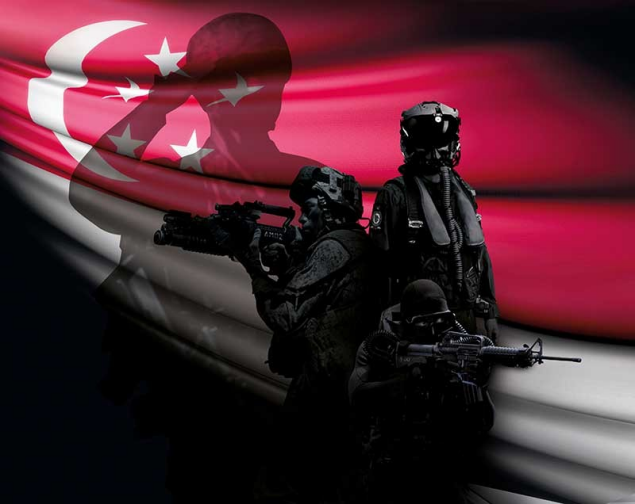
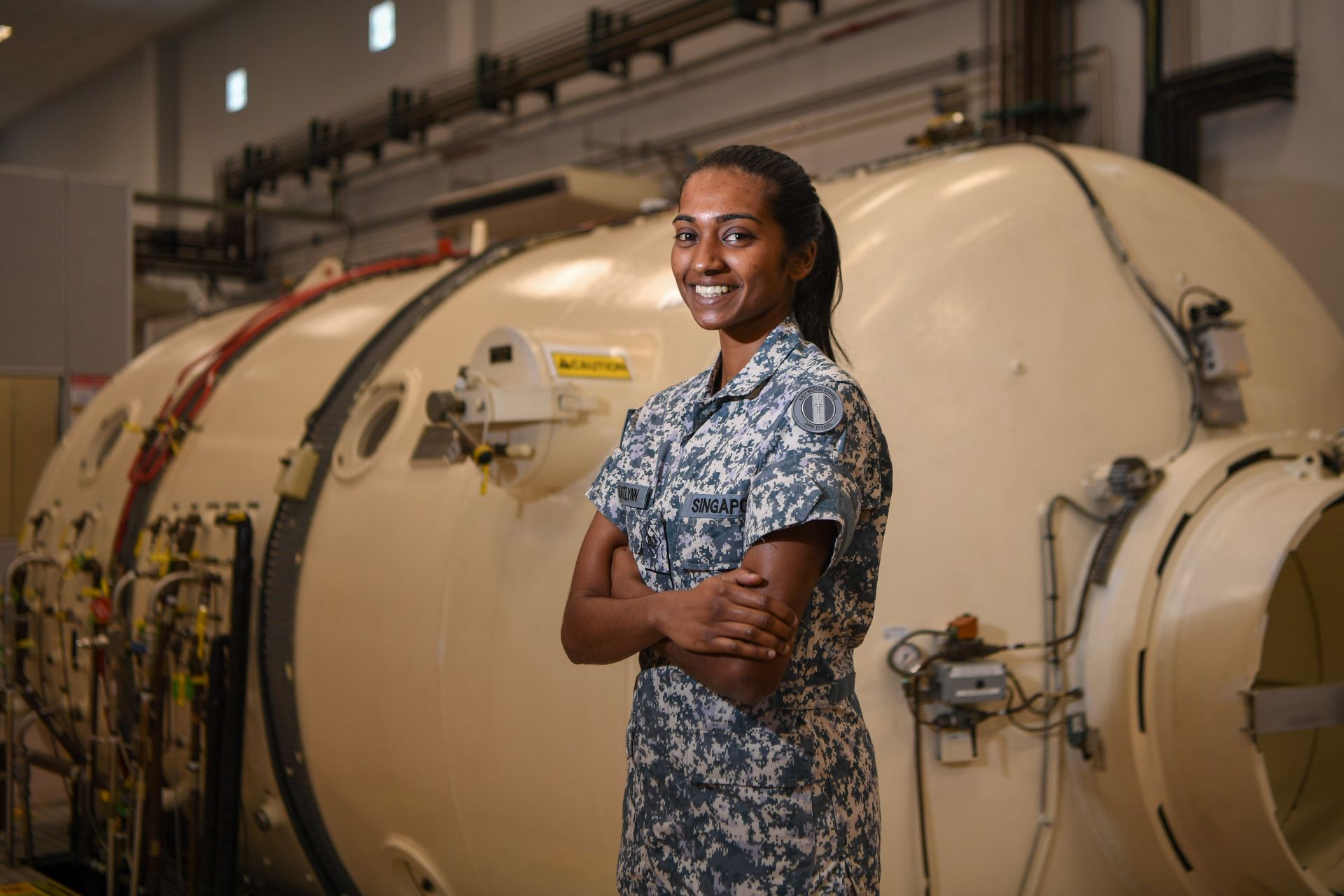
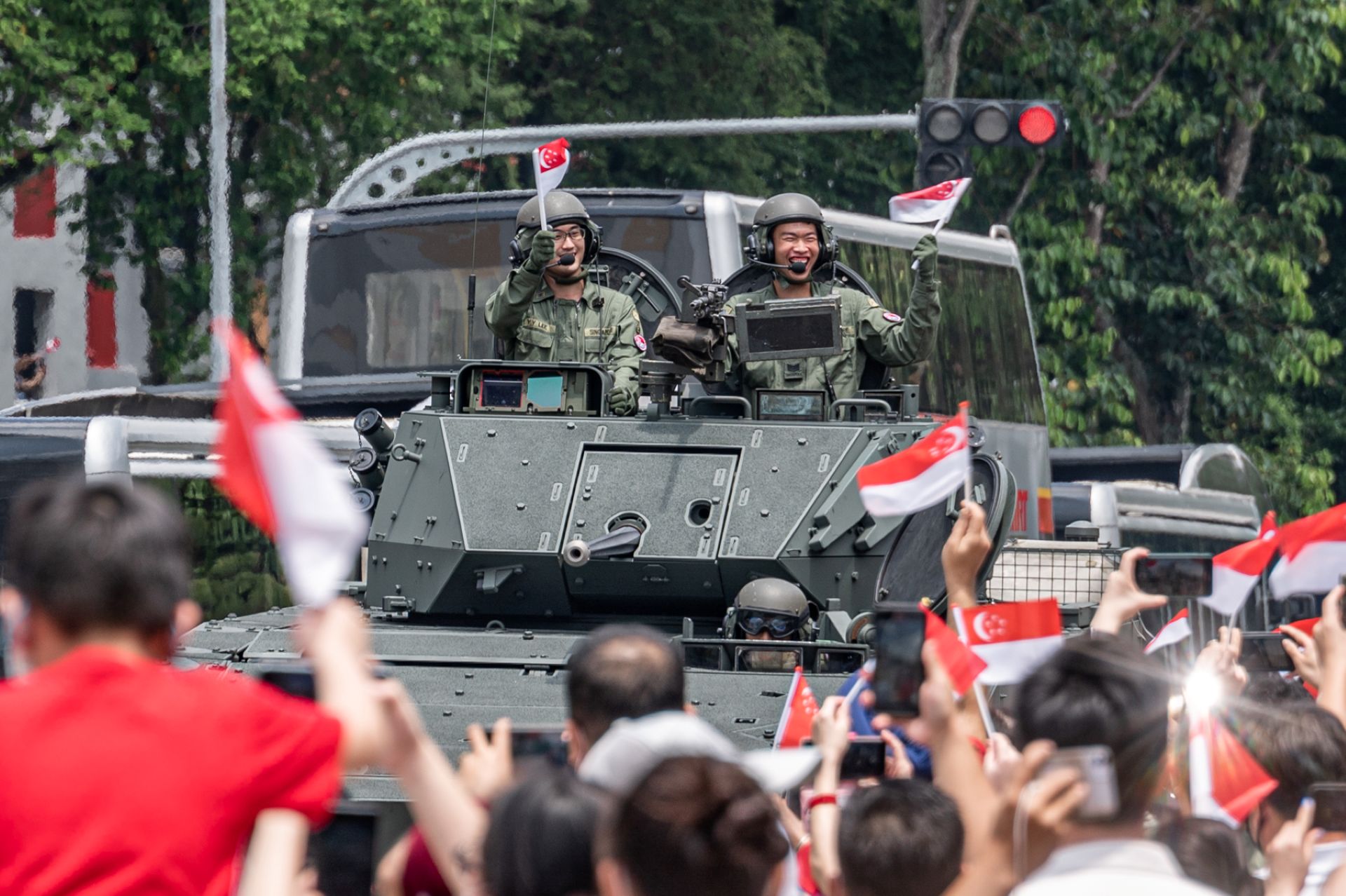
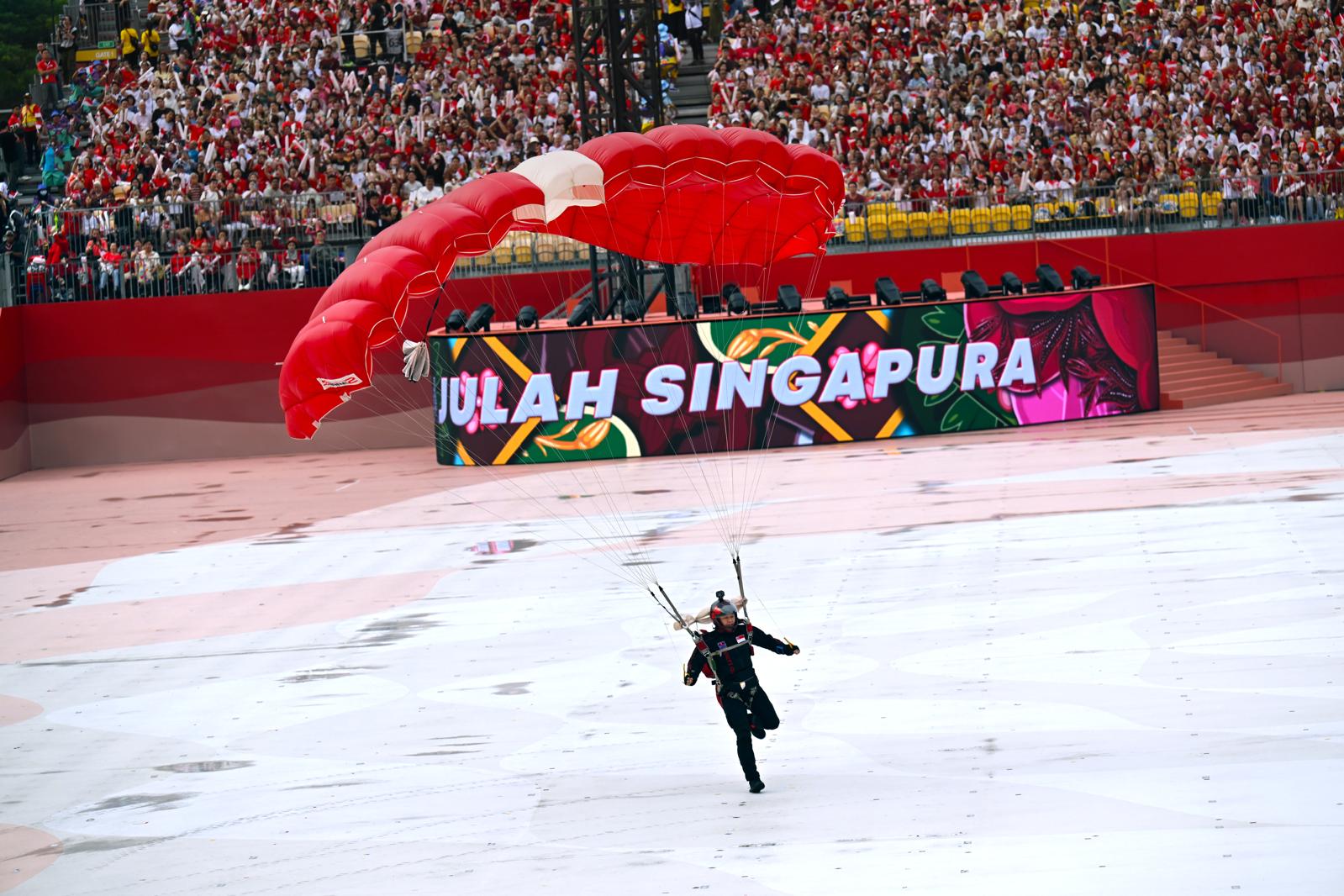
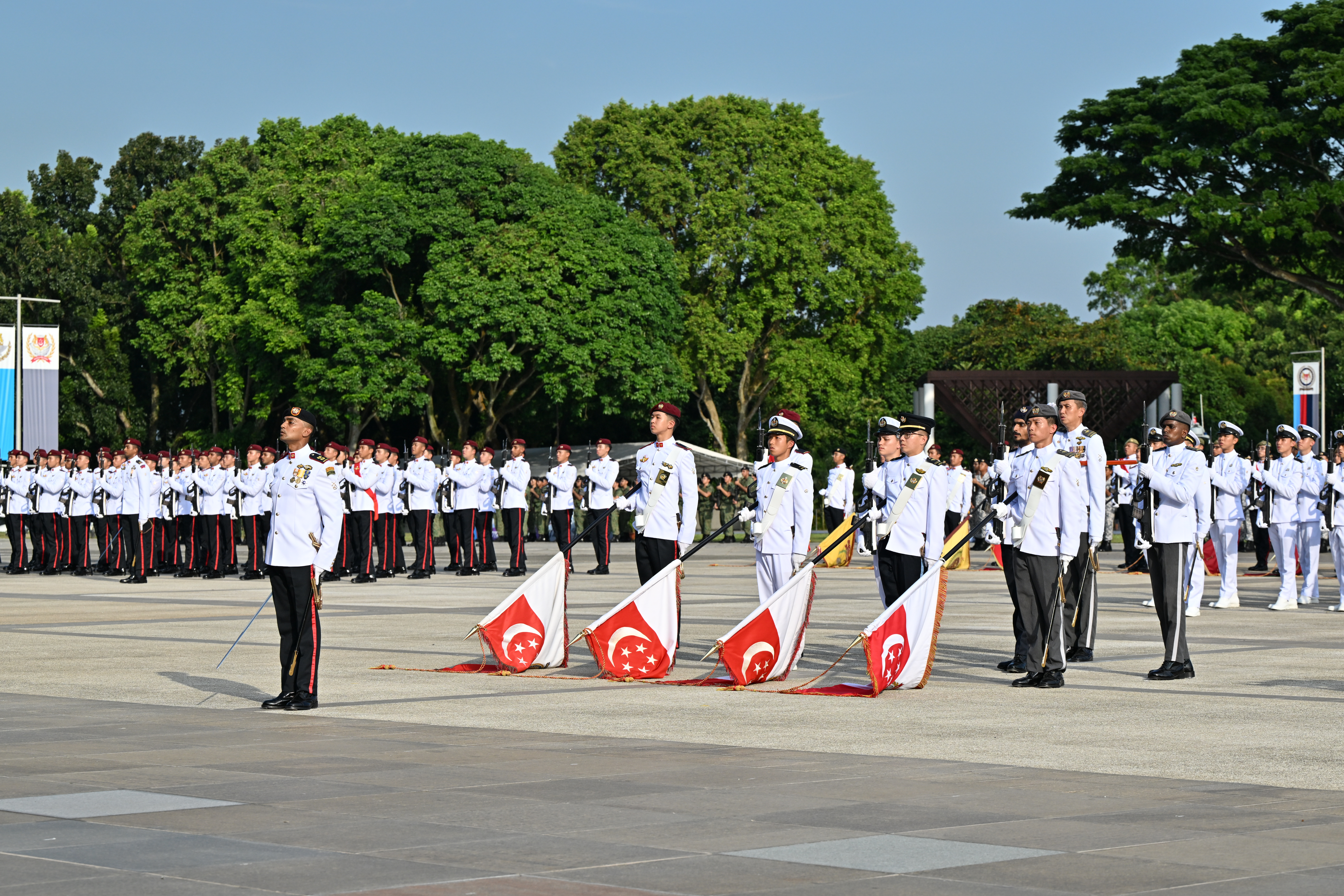
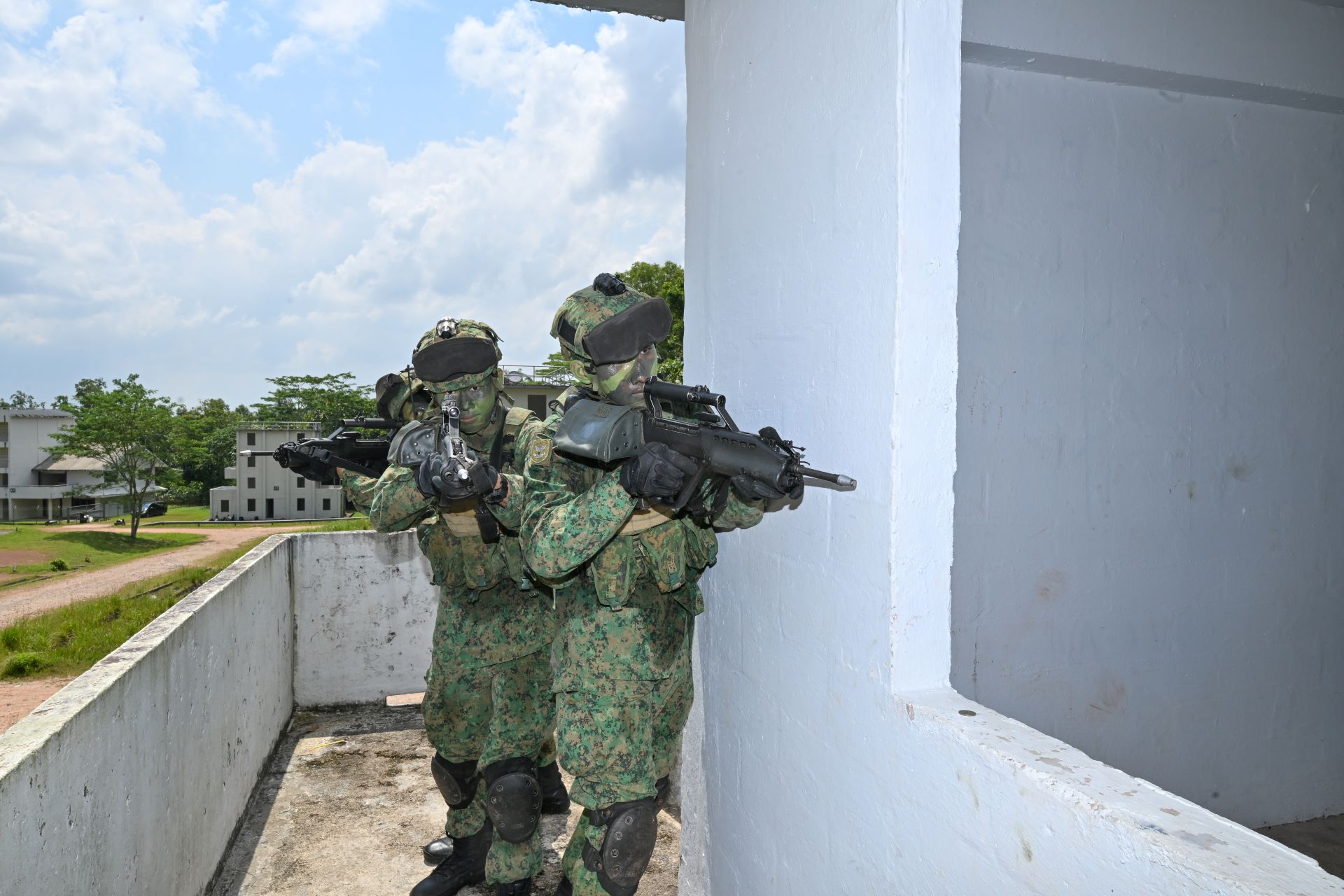
.jpg?sfvrsn=b5383902_1)
.jpg?sfvrsn=4eb1b86e_1)
